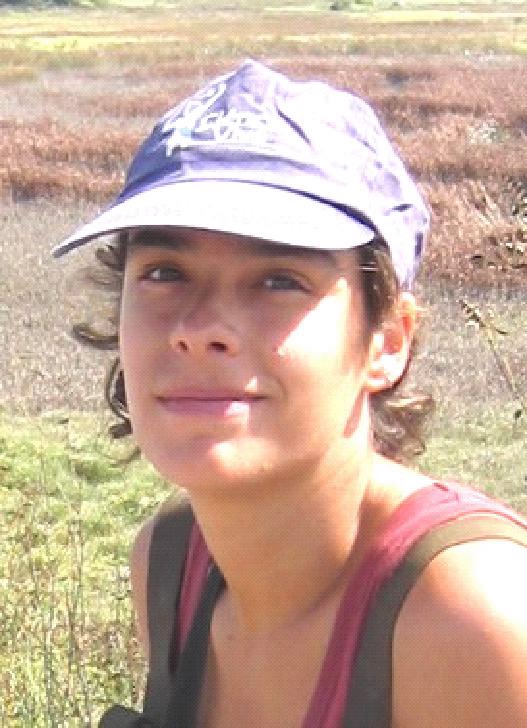
| Address: | NIOZ - Royal Netherlands Institute for Sea Research, Texel, Nederland; Centro Interdisciplinar de Investigação Marinha e Ambiental. Porto, Portugal. |
|---|---|
| Phone: | |
| Email: | Vania.Freitas@nioz.nl |
| Curriculum vitae | |
| Specialization: | Applied Animal Biology |
| Project: | Temperature dependence of predation on estuarine bivalves |
| Publications: |
Since these predator-prey interactions are size dependent, overall predation pressure will depend on one hand, on the ability of the bivalve prey to outgrow the predation size spectrum and, on the other hand, on predators' functional response. In this respect, both temperature and food conditions are crucial since temperature dictate the time bivalve prey take to escape predation by outgrowing predators, and food conditions ultimately determine if bivalve growth potential can be achieved, allowing a shortening of the predation window. Therefore, insight on the impact of climate change requires insight in the temperature sensitivity of prey in relation to their predators as well as on its effects on food requirements of both predators and prey if growth potential can be implemented.
The impact of climate change in temperate estuarine food web will be determined by how the various size-selective interactions are affected by temperature. This will depend on the temperature sensitivity of each species' growth and on how food conditions allow them to fill in this growth potential. The focus is on the first aspect: temperature sensitivity of the epibenthic predators compared with that of the bivalve prey and among the various predator species. Our results show that crustaceans have higher temperature sensitivity and tolerance range compared with their potential predators and with their bivalve prey. It is hypothesized that a temperature increase can potentially lead to an overall higher predation pressure in these systems with negative impacts in bivalve recruitment and hence, in the functioning of temperate estuaries as fuelling stations. However, prevailing food conditions for bivalves and predators will determine to what extent the potential impacts of an increase in temperature will be realized.
Implications of climate-induced temperature increases on bivalve productivity were studied by analyzing present relationship between feeding conditions and temperature along the Northeast Atlantic coast, whereby the latitudinal gradient was considered to reflect trends in temperature. Four common bivalve species were selected: three suspension-feeders (Mya arenaria, Cerastoderma edule and Mytilus edulis) and one facultative deposit/suspension feeder (Macoma balthica). The approach used was based on the Dynamic Energy Budget (DEB) theory in which intrinsic species-specific parameters define theoretical maximum size which, in combination with prevailing food conditions, determine observed maximum size; see also Cardoso 2007. For all species and locations, food conditions were reconstructed based on a comparison between theoretical maximum size with observed maximum size. In general, food conditions for M. balthica were better than those for the suspension feeding species. Nevertheless, for all species, food limitation was suggested over a wide range of temperatures. No clear pattern or relationship of food conditions with latitude was observed, suggesting that any trend was overruled by local conditions. In the light of the fact that, with increasing temperature, maintenance costs will increase, and of the existence of food limitation over a wide latitudinal range it is unlikely that bivalve productivity will increase with climate change.
| 11:45 | welcome by the Rector Magnificus (Jelte Rozema) | |
|---|---|---|
| promotor Prof. Dr. Bas Kooijman; copromotor Dr. H. van der Veer |
||
| 11:45 | Introduction by Vânia | |
| 11:55 | Prof. Dr. Kevin Bailey | Senior Scientist at Alaska Fisheries Service Centre, Seattle and University professor in Washington |
| 12:05 | Prof. Dr. Peter Herman | Head of the department for spatial ecology at the Centre for Estuarine and Marine Ecology, Yerseke and University Professor at Radboud |
| 12:15 | Dr. Richard Nash | Institute for Marine Research, Bergen University. |
| 12:25 | Pof. Dr. Adriaan Rijnsdorp | Senior scientist at IMARES, IJmuiden and University Professor at Wageningen |
| 12:35 | Dr. Tjalling Jager | Sectie Theoretische Biologie, FALW, VU |
| 12:45 | end of defence; start of closed meeting | |
| 13:10 | ceremony | |
| 13:20 | end of ceremony; reception |